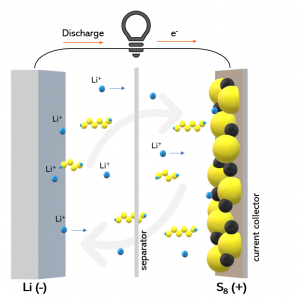| Li-S Energy Limited |

| Registration Date | 9 Oct 2021 |
| Revision Date | 9 Oct 2021 |
| Share |
Renewable Energies Batteries
Battery-Greater Energy Capacity -Lighter Weight -Lower Cost per KWh -Faster Charging -Enhanced Safety -Cleaner and Greener
The rechargeable battery market is growing rapidly and forecast to continue growing strongly over the foreseeable future. The GWh demand from EVs alone is forecast to grow more than five times by 2025, and more than 50 times by 2040. New battery technologies are required to address the inherent limitations with lithium-ion batteries which currently cannot be significantly improved due to their fundamental chemistry.
In short, the world needs a better battery. To meet market demand, EVs need longer range, drones need longer flight times, and many new technologies need longer battery life at lower cost to become commercially viable.
Li-S Energy is undertaking R&D and commercialisation on a new generation of high-performance batteries using lithium-sulphur chemistry instead of lithium-ion.
For decades, scientists have known that using lithium and sulphur electrodes in a battery presented one of the best opportunities to create a high-performance battery. At 2,567Wh/kg, the theoretical energy density of a lithium-sulphur battery is in the order of five times that of a standard lithium-ion battery while they are also lighter, safer, faster charging, and using more environmentally friendly raw materials.
However, lithium-sulphur batteries have yet to be mass produced. Historically, the challenge in developing lithium-sulphur batteries has been effectively optimising and stabilising the battery components during charge and discharge cycling. Lithium-sulphur batteries tended to fail after a low number of recharge cycles, making them of little use for most commercial applications.
Li-S Energy’s research and development has shown that integrating BNNTs into lithium-sulphur battery components and architecture is an effective method of stabilising the battery components during charge and discharge, creating a lithium- sulphur battery cell with a cycle life approaching that of everyday consumer grade lithium-ion batteries. This offers the potential for a lithium-sulphur battery to finally be commercialised and mass produced.